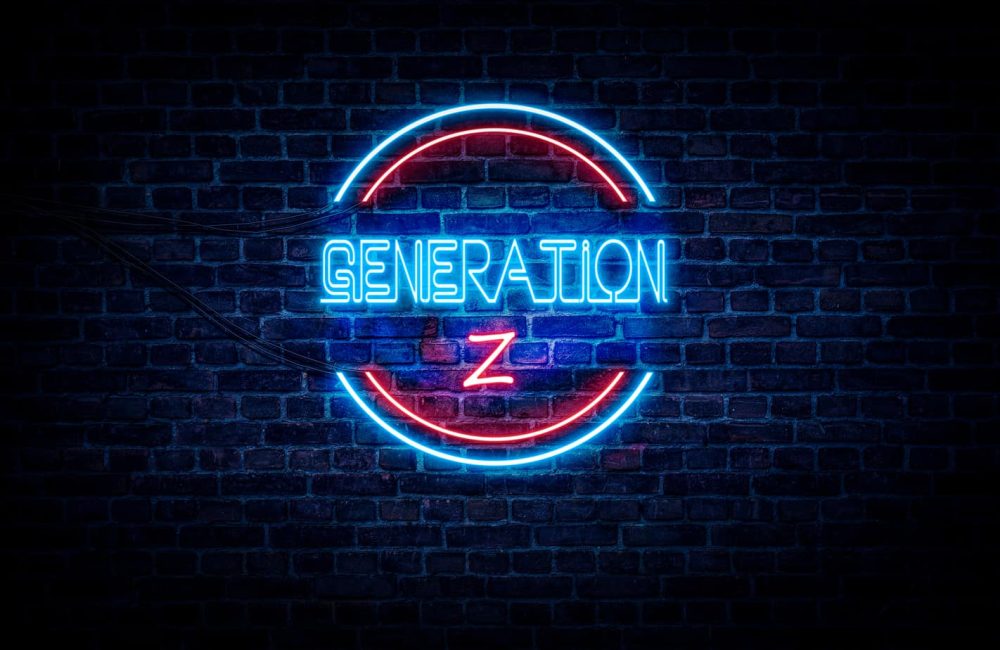Driven by an extremely rapid influx of new transportable technologies, Millennials started the trend of valuing experiences over physical goods. Peering through the latest filters, they ardently consumed each other’s shared content and quickly conspired how to recreate the same experience. Now, as Millennials start turning 40 this year, this disruption is understood and accounted for in brand strategies — leading the next question to be, are brands and marketers better prepared for Gen Z?
Not so long ago, the Millennial-led shift to sharing everything online had many brands and marketers thinking too future-forward, as if there was only a short window of time before all entertainment and business would be conducted via our pocket-sized devices, and not in real life. Brick-and-mortar stores were among the first to take note, with many putting substantial energy, effort, and finances behind ramping up – or even creating – eCommerce sites to drive sales. However, reality quickly proved that Millennials, and even more so the Gen Z-ers that follow in their footsteps, are unpredictable. While they took to their phones to let their camera eat first, battle for the most check-ins at locations they shop and rate their experiences, their shopping habits stayed faithful to brick-and-mortar and in-store purchases. In fact, just this last year, 89.3 percent of total U.S. retail spending was a result of in-person shopping.
We’ve adapted to Millennial demands, but analysis of the latest consumer experiences shows many brands and marketers haven’t learned the lessons that will better prepare them for the next wave of disruptive consumers. There’s little time left to wait, as Gen Z will account for $29 to $143 billion in direct spending, making them the largest generation of consumers in 2020.
If Millennials taught the retail industry anything, it is to continue to lean into and embrace the fickle nature of consumers. It is not just keeping up with the latest technologies and trends altering consumer behavior, but understanding the source of consumer discovery, trust and desire that will build a futureproof retail strategy.
Phone Bringing Them In-Store, Not Just Online
As Gen Z’s impact is only set to increase, the first step for retailers is to recognize the customer journey is cyclical and a partnership of online and nearby. Faced with what seems like too many choices across too many platforms, consumers are turning back to traditional – but with a twist. Data and devices have become the catalyst upon which retail purchases happen, but not exactly in the way you may think.
Before all else, instead of heading directly to a retailer to make a purchase, consumers are using the many tools and services at their disposal to receive instant information and insight from their communities. They are using this data to make decisions, but instead of automatically completing the purchase via an eCommerce site, they are still seeking an experience – an opportunity to try before they buy or compare in-store sales – that lands them at a nearby physical location. The cycle continues after the purchase, as these consumers return to the Internet, leaving reviews and feedback to inform the next customer.
What does this mean for brands? Quite simply, to not let your guard down or put all your eggs in one basket. This “hybrid” consumer journey only promises to get more complicated as Gen Z adopts whatever technology is to come, but the desire for local, in-person experiences demands attention from brands as well. Having a presence on the newest social channel is great, but if consumers can’t find your nearest location, you’re missing the critical connection that converts browsing to buying and builds a foundation of brand loyalty.
Values Over Brands
Just when retailers think they have it all figured out, another curveball comes their way. Once they have established how to build connections throughout the hybrid customer journey, they have to determine and keep the careful balance that maintains the cycle. Without this temperamental push-and-pull, brands face losing existing customers and icing out new ones.
It’s important to accept that offering an in-store experience that encourages customers to refer and return is just as vital as keeping an excellent online presence. Word-of-mouth has always been a powerful means of communication, but the Internet has taken this concept to the extreme. Consumers are free to leave feedback wherever they please across multiple websites and applications. Brands that do not engage with this feedback – the good and the bad – risk losing sales, since the feedback helps new customers find the business in a local search or vet the experiences of others against their expectations.
Brands that recognize the buying behaviors of the Internet-raised Gen Z population will be one step ahead when it comes to futureproofing their business. Gen Z is using the Internet to conduct quick keyword searches on-the-go via their mobile devices or even voice searches. They are unlikely to search or go through the process of visiting individual brand sites or applications to find what they need, and oftentimes they are searching based on personal values or preferences rather than legacy brands. They would rather search for things such as “sustainable clothes nearby” and have many options at once, all with the associated feedback from their fellow consumers. Brands that recognize the power of optimizing unbranded keywords to reach shoppers have a head start with Gen Z – and their purchasing power.
What’s Next?
The state of retail has never been more in flux. Gen Z guarantees to aggressively increase the level of complication in the consumer path to purchase. If retailers felt they were not prepared for or could not manage how Millennials altered the shopping landscape, they need to start now to future proof for Gen Z. Tapping into some of the most powerful consumers means brands need to expand their definition of experience and realize that it goes beyond just what’s on the physical or digital shelves.















